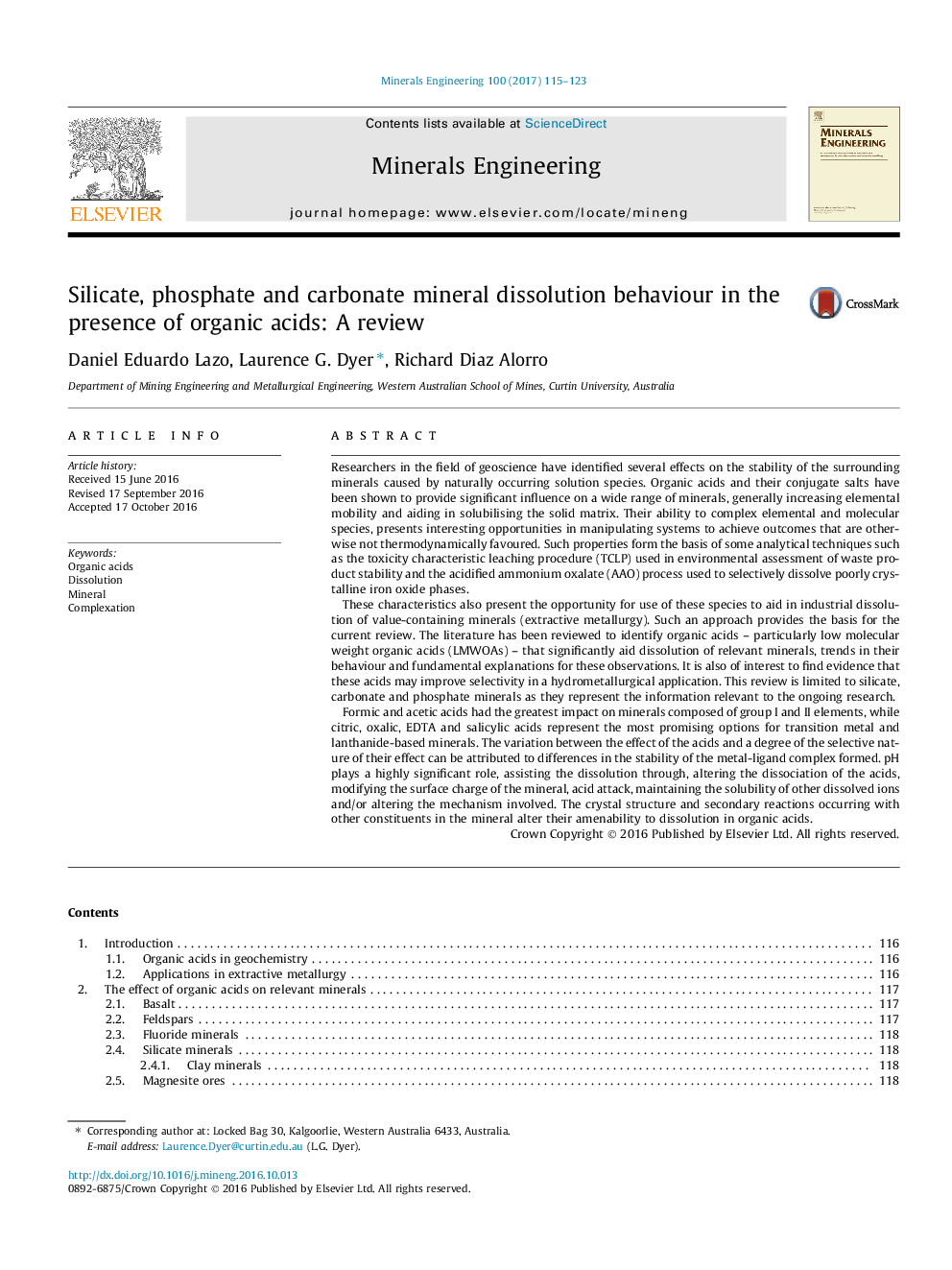| Article ID | Journal | Published Year | Pages | File Type |
|---|---|---|---|---|
| 4910276 | Minerals Engineering | 2017 | 9 Pages |
Abstract
Formic and acetic acids had the greatest impact on minerals composed of group I and II elements, while citric, oxalic, EDTA and salicylic acids represent the most promising options for transition metal and lanthanide-based minerals. The variation between the effect of the acids and a degree of the selective nature of their effect can be attributed to differences in the stability of the metal-ligand complex formed. pH plays a highly significant role, assisting the dissolution through, altering the dissociation of the acids, modifying the surface charge of the mineral, acid attack, maintaining the solubility of other dissolved ions and/or altering the mechanism involved. The crystal structure and secondary reactions occurring with other constituents in the mineral alter their amenability to dissolution in organic acids.
Related Topics
Physical Sciences and Engineering
Chemical Engineering
Chemical Engineering (General)
Authors
Daniel Eduardo Lazo, Laurence G. Dyer, Richard Diaz Alorro,
